Jointly organized by the Institute of Physical and Technical Problems and Materials Science, National Academy of Sciences of the Kyrgyz Republic (IPTPMS, NAS/KR), the Institute of Remote Sensing and Digital Earth, Chinese Academy of Sciences (RADI/CAS), and the International Society for Digital Earth (ISDE), the 2nd International Symposium on Earth Observation for Arid and Semi-arid Environments (ISEO2014) was held at Issyk-kul Lake, Kyrgyzstan from September 10 to 12, 2014. It brought together more than 100 experts from 14 countries, including China, Kyrgyzstan, Tajikistan, Kazakhstan, Uzbekistan, Russia and Belarus. They held extensive and in-depth discussions under the theme of “Central Asia: Looking from Space”.
Prof. GUO Huadong, CAS Member and co-chair of ISEO 2014, addressed the opening ceremony, which was presided over by Prof. K. Zhumaliev, NAS/KR Member and co-chair of the meeting. Prof. Guo pointed out that by taking advantage of the opportunity of Silk Road Economic Belt (SREB), ISEO2014 will offer a platform for conducting Earth observation and related cooperation for its application in Central Asia. Earth observation technology could help human society in addressing challenges to its existence and will play an important role in food security, natural disaster mitigation, climate change adaptation and environmental sustainable development. He called for further cooperation in the field among countries in the region to serve the development of SREB.
Other speakers at the ceremony included NAS/KR Member and President Abdygany Erkebaev, Kyrgyz Minister of Agriculture and Food T. A. Aidaraliev, Kyrgyz Minister of Education and Sciences K. J. Sydykov, Chair of State agency on Geology and Mineral Recourses under KR Government D. T. Zilaliev, Deputy head of Roskosmos Sergei Saveliev, President and Academician of the National Academy of Sciences of Belarus Peter Vityaz and Academician of National Academy of Kazakhstan Republic Halel Bespaev. They stressed the rapid progress of space science and technology and their extensive application in various sectors, including agriculture, disaster reduction, global change and mineral resources. They also elaborated the region’s needs for space science and technology and expressed the strong hope to collaborate with China in this regard. They spoke highly of ISEO as a platform for such cooperation and the leading and substantive role of CAS in the cooperation.
The meeting featured 19 reports in five plenary sessions and more than 50 reports in 10 parallel sessions. Participants held academic exchanges on a variety of topics, including theory and technology of Earth observation, water resources, minerals and energy sources, disaster reduction and prevention, eco-environment monitoring and evaluation and global change. Several bilateral and multilateral meetings on Earth observation cooperation in SREB were also held. The meeting further promoted the exchanges of Earth observation technology and application in this region, which is conducive for ISEO meeting series to gradually become one of the most influential academic meetings in the region.
Under the aegis of RADI, IPTPMS and the research team on Silk Road Economic Belt supported by the Academic Division of CAS, the Roundtable on the development of the Silk Road Economic Belt through Earth observation was convened as a side event during ISEO2014 Symposium. Co-chaired by RADI Director-general Prof. GUO Huadong and IPTPMS Director K. Zhumaliev, the meeting was attended by 30 participants from 12 countries (including China, Russia, Kyrgyzstan, Tajikistan, Kazakhstan, Uzbekistan and Belarus) and 2 international organizations. They held discussions on the Phoenix Program of Science and Technology (literally, the territories of China and five central Asian countries look collectively like a beautiful phoenix as shown from the satellite image), a program to support regional sustainable development through space technology, with special focus on cooperation in six areas: agriculture, water resources, eco-environment pattern and global change adaptation, urbanization and traffic layout, natural resources, world heritage, and space information communication.
A Statement on Scientific Program of Earth Observation for Development of Silk Road Economic Belt was approved at the meeting. It emphasizes that Earth observation technology enables people to address the challenges to its existence, and plays an important role in ensuring food, water and energy security, fighting against natural disasters, adapting to climate change and maintaining environmental sustainable development. Central Asian countries should further promote the use of space-borne Earth observation to facilitate S&T cooperation in SREB. The statement calls for establishing an International Scientific Committee for the Phoenix Program. The committee will offer consultation and suggestions on forms and activities of the cooperation. The statement declares that Central Asian countries should boost cooperation in such areas as agriculture, natural resources, urbanization and transport infrastructure, ecosystem, environment, world heritage, disaster mitigation, and global change, and promote the region’s capacity building and talent cultivation in the regard. The statement also suggests submitting a joint proposal to establish GEO Central Asian Initiative with the objectives of establishing a regional network of infrastructure for information and resource sharing in the region by developing a platform for exchanges and cooperation through GEO. It was decided that the next meeting of International Scientific Committee for the Phoenix Program will be held in Beijing in 2015.
Launched by RADI, ISEO is a biennial meeting series focusing on the Earth observation technology and applications in arid and semi-arid environments, especially Central Asia and the neighboring regions. The first ISEO was held in Kashi of northwest China’s Xinjiang Uyghur Autonomous Region. The 3rd ISEO is to be held in Tajikistan from September 12 to 14 in 2016.
On September 9, Prof. GUO Huadong and Prof. Abdygany Erkebaev jointly unveiled the nameplate for the Research Center for Earth Observation and Digital Earth, which is jointly set up by RADI and NAS, in Bishkek, capital of Kyrgyzstan.
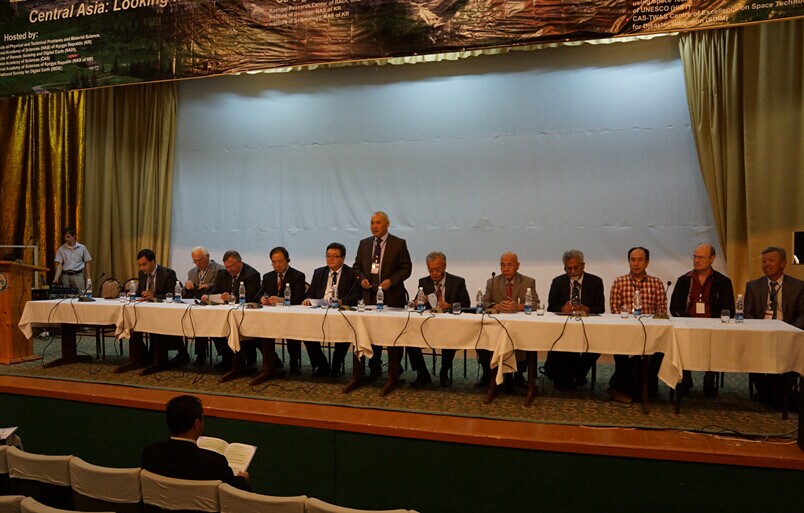
Opening Ceremony of ISEO 2014.

Prof. GUO Huadong addresses the ISEO 2014.
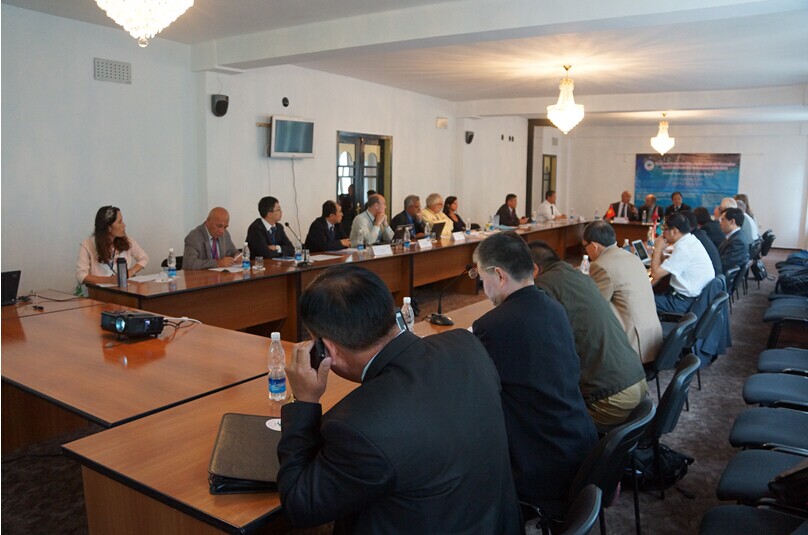
Participants of the Roundtable.
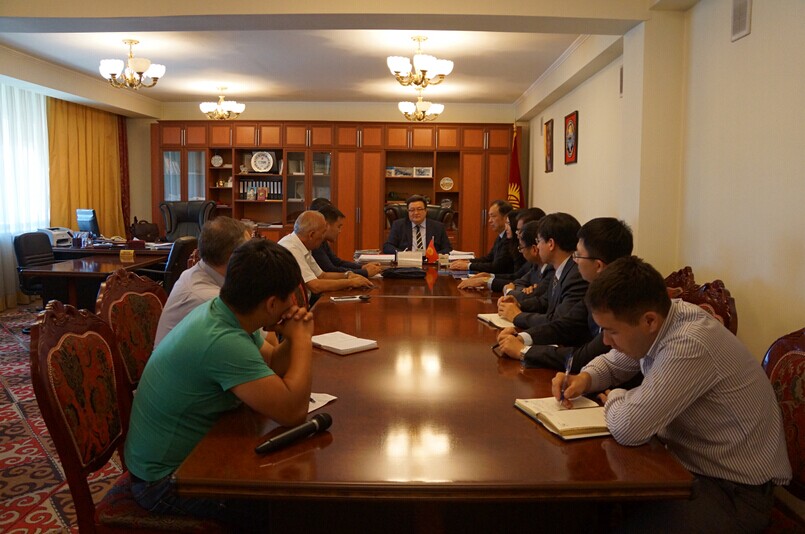
Chinese delegation holds a meet with officials from the Kyrgyz Ministry of Agriculture and Food.
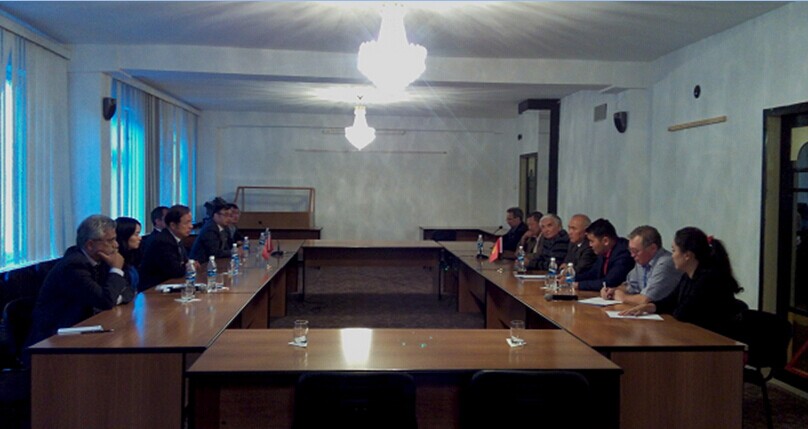
Bilateral meeting is held between RADI and IPTPMS.
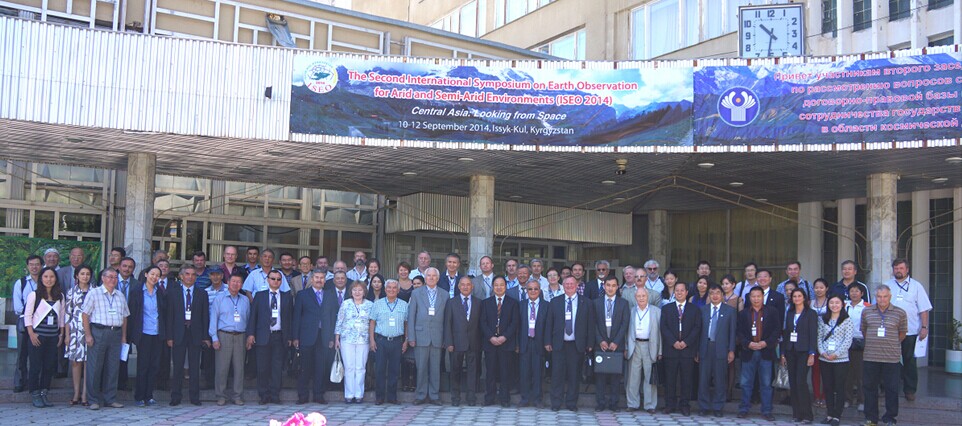
A group photo of the ISEO2014 Participants.